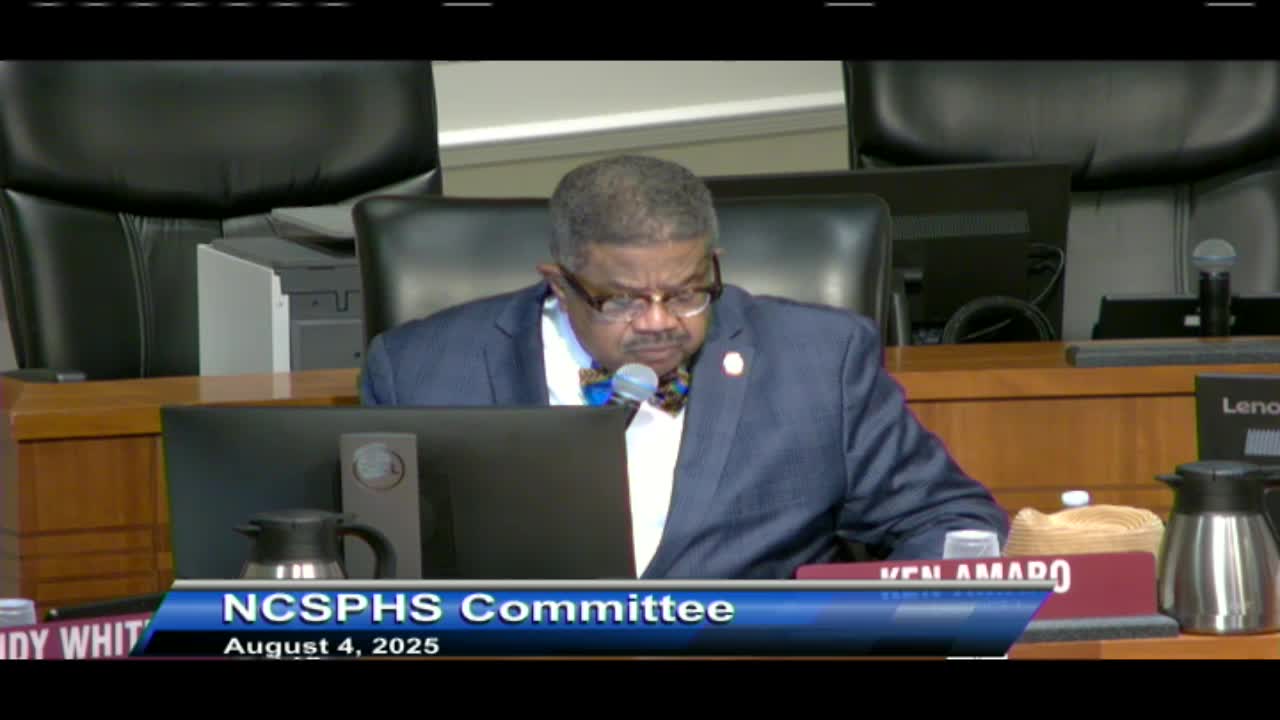Council Approves 50% Building Value Threshold for Industrial Renovations
August 04, 2025 | Jacksonville, Duval County, Florida
This article was created by AI summarizing key points discussed. AI makes mistakes, so for full details and context, please refer to the video of the full meeting. Please report any errors so we can fix them. Report an error »

In a recent meeting of the Neighborhoods, Community Services, Public Health and Safety Committee in Jacksonville, city officials engaged in a detailed discussion about property management regulations and community safety measures. The atmosphere was charged with a sense of urgency as council members navigated complex issues surrounding property offenses and community concerns.
One of the key topics was the criteria for monitoring properties with repeated offenses. Council members debated the appropriateness of a two-year window for considering past incidents, with some advocating for a more proactive approach that would allow the Jacksonville Sheriff's Office (JSO) to address properties that have a history of issues, even if those incidents occurred beyond the two-year mark. This discussion highlighted the community's desire for a more responsive system to tackle ongoing safety concerns.
Chief White emphasized the importance of JSO's current practice of monitoring properties after a qualifying offense, suggesting that this proactive stance is essential for community safety. However, some citizens expressed frustration, feeling that properties with a history of problems should be addressed regardless of the time elapsed since the last incident.
The committee also tackled amendments to existing legislation regarding property renovations. A proposal to adjust the threshold for renovations from 50% to 60% of the property's assessed value was met with mixed reactions. Proponents argued that raising the threshold would encourage redevelopment and revitalization in the community, while city officials cautioned against deviating from established standards, citing the need for consistency across different types of projects.
Nina Sickler from the Public Works Department defended the current 50% threshold, arguing that it ensures necessary improvements are made to enhance the community's visual appeal and overall quality. The committee ultimately decided to maintain the 50% threshold, but discussions about potential compromises, such as a 55% threshold, indicated a willingness to explore options that could benefit both developers and the city.
As the meeting concluded, the committee approved several motions, including amendments to existing bills, reflecting a commitment to balancing community safety with the need for development. The discussions underscored the ongoing challenge of addressing community concerns while fostering an environment conducive to growth and revitalization in Jacksonville. The committee's decisions will likely have lasting implications for how properties are managed and how community safety is prioritized in the future.
One of the key topics was the criteria for monitoring properties with repeated offenses. Council members debated the appropriateness of a two-year window for considering past incidents, with some advocating for a more proactive approach that would allow the Jacksonville Sheriff's Office (JSO) to address properties that have a history of issues, even if those incidents occurred beyond the two-year mark. This discussion highlighted the community's desire for a more responsive system to tackle ongoing safety concerns.
Chief White emphasized the importance of JSO's current practice of monitoring properties after a qualifying offense, suggesting that this proactive stance is essential for community safety. However, some citizens expressed frustration, feeling that properties with a history of problems should be addressed regardless of the time elapsed since the last incident.
The committee also tackled amendments to existing legislation regarding property renovations. A proposal to adjust the threshold for renovations from 50% to 60% of the property's assessed value was met with mixed reactions. Proponents argued that raising the threshold would encourage redevelopment and revitalization in the community, while city officials cautioned against deviating from established standards, citing the need for consistency across different types of projects.
Nina Sickler from the Public Works Department defended the current 50% threshold, arguing that it ensures necessary improvements are made to enhance the community's visual appeal and overall quality. The committee ultimately decided to maintain the 50% threshold, but discussions about potential compromises, such as a 55% threshold, indicated a willingness to explore options that could benefit both developers and the city.
As the meeting concluded, the committee approved several motions, including amendments to existing bills, reflecting a commitment to balancing community safety with the need for development. The discussions underscored the ongoing challenge of addressing community concerns while fostering an environment conducive to growth and revitalization in Jacksonville. The committee's decisions will likely have lasting implications for how properties are managed and how community safety is prioritized in the future.
View full meeting
This article is based on a recent meeting—watch the full video and explore the complete transcript for deeper insights into the discussion.
View full meeting